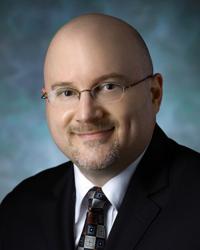Conditions We Treat: Blepharospasm
Blepharospasm is characterized by uncontrollable spasms of both eyelids, which can be strong enough to keep your eyelids closed. It is due to dystonia (an irregular, involuntary muscle contraction) affecting the small muscles in and around the eyelids. Hemifacial spasm causes involuntary spasms of the eyelid on one side, as well as spasms in the lower face on that side.
Eyelid Spasms: Why Choose Johns Hopkins

- Johns Hopkins neurologists regularly treat people with neurological eye disorders, and our physicians can assess troublesome twitching or abnormal movement of the eyelid or face and arrive at a diagnosis.
- If your symptoms are due to other eye problems or other nervous system disorders, Johns Hopkins experts ensure you get a multidisciplinary approach to diagnosis and state-of-the-art treatment.
- Our experts are skilled in addressing blepharospasm and hemifacial spasm with botulinum toxin.
Our Approach to Blepharospasm and Hemifacial Spasm
The cause of these conditions can be an irritation of the facial nerve (the nerve that moves the facial muscles on one side) by a loop of blood vessel on the same side. Botulin toxin is a very effective medicine for both blepharospasm and hemifacial spasm. If the medication does not control hemifacial spasm, your doctor may recommend neurosurgery to separate the nerve from the blood vessel, which can be effective.
Your Neuro-Visual and Vestibular Team
Our multidisciplinary team is dedicated to advancing neuro-visual and vestibular conditions’ treatment and research, and improving patients' lives. The team is led by Dr. Newman-Toker, director of the division of neuro-visual and vestibular disorders.




